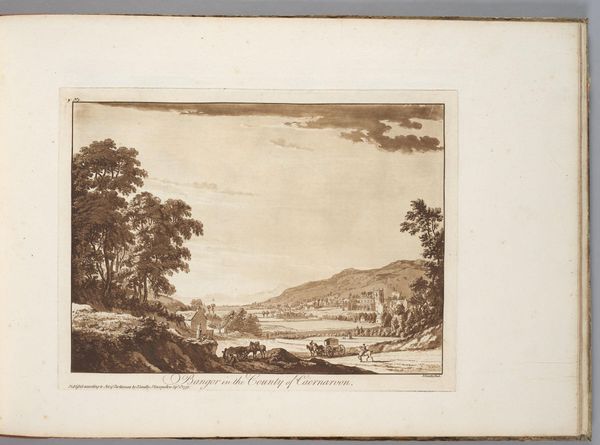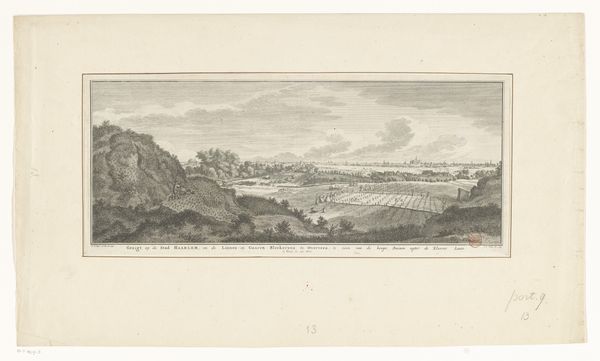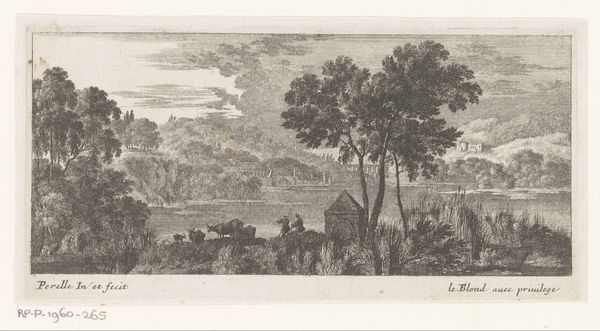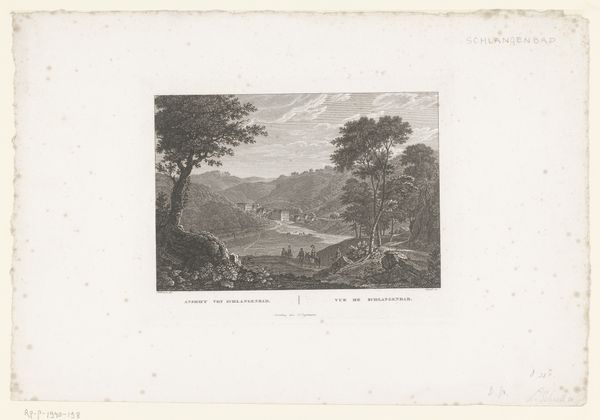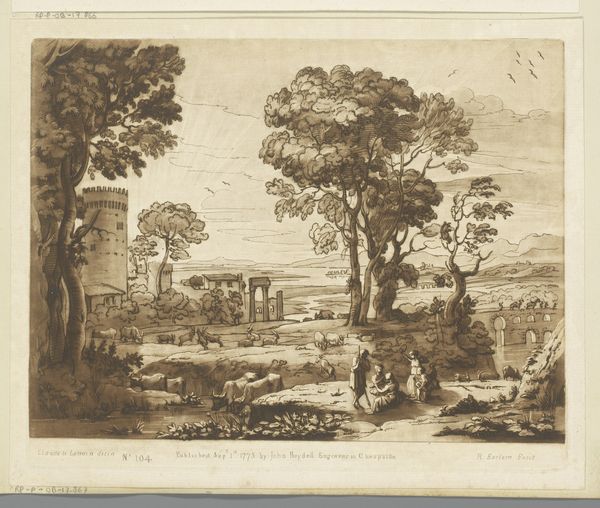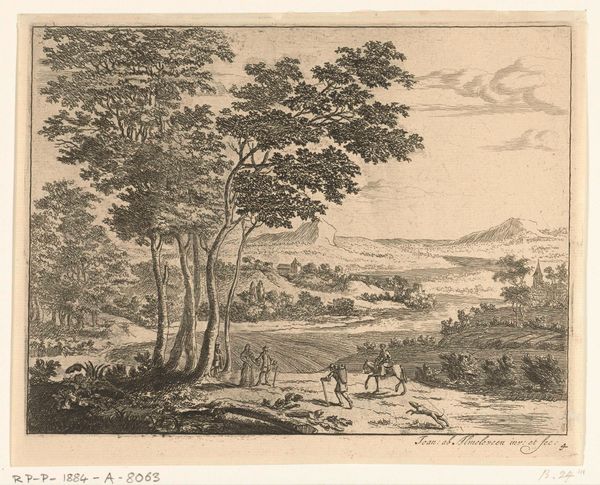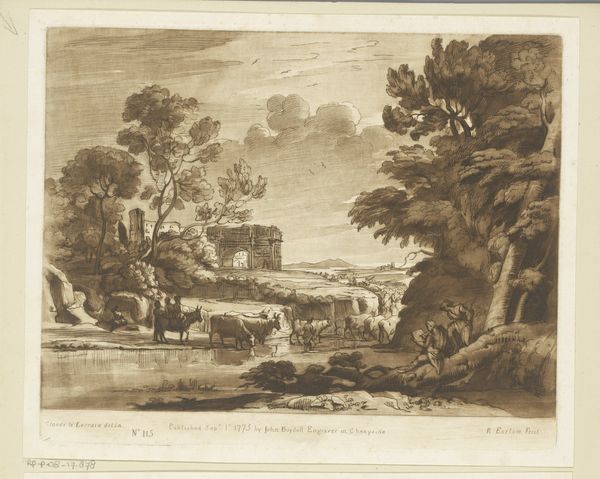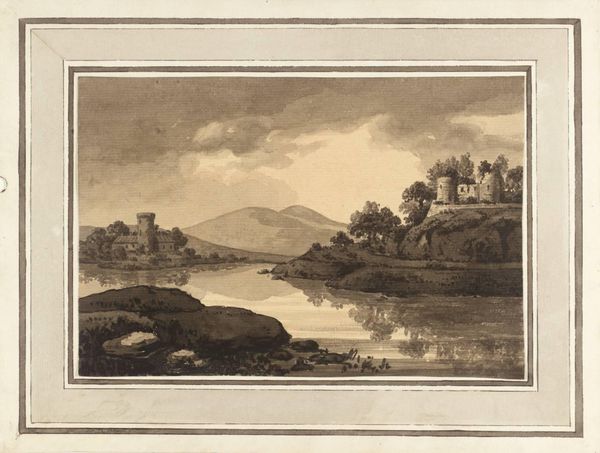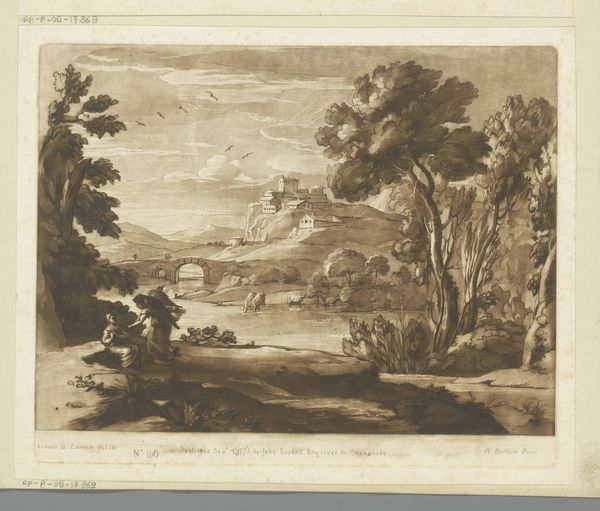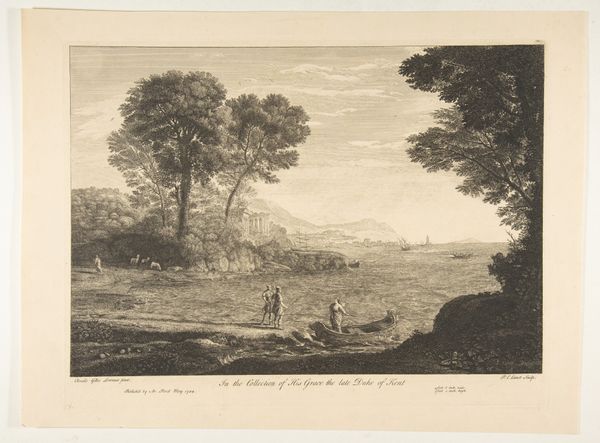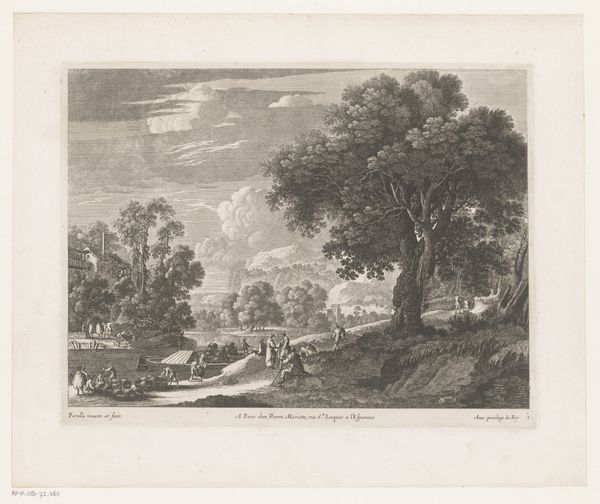
drawing, print, etching, paper
#
drawing
#
neoclacissism
# print
#
etching
#
landscape
#
paper
Dimensions: 239 × 315 mm (plate); 320 × 463 mm (sheet)
Copyright: Public Domain
Curator: Before us hangs "Bangor in the County of Caernarvon," a 1776 etching by Paul Sandby. Editor: It’s muted, isn’t it? A serene scene, almost sepia-toned, gives it a feeling of…distance. Curator: Indeed. The subdued palette reflects the etching process itself, and also the availability of certain pigments and dyes at that time. Think about how printmaking allowed for wider dissemination of such views, impacting how places like Bangor were perceived and perhaps even influencing tourism. Editor: From a compositional perspective, note the contrast between the wilder landscape to the left and the controlled lines of the buildings of Bangor nestled against the hill to the right. Sandby is orchestrating a dialogue between nature and human intervention here. It feels almost idealized, a picturesque framing. Curator: Picturesque certainly—this aesthetic preference was very fashionable. Also consider who might have purchased these prints, decorating their homes with this sort of artwork. Were they landowners, merchants, or people associated with the administration of that specific county, eager to connect with—and perhaps subtly stake claim to—this depiction? Editor: It draws you in, but then keeps you at bay. The subject feels somewhat remote, even for a landscape. Note how his mark-making captures the texture of the trees and hills, achieving depth using only subtle tonal variation. Curator: And consider the paper itself. Handmade paper would have been essential for printmaking, relying on skilled labor to make the paper uniform enough to take the etched lines cleanly and uniformly. Editor: So while Sandby's composition organizes this vision of a natural setting into a balanced tableau, the etching technique brings out the subtler textures in a nuanced display of depth. Curator: Yes, exactly. What seems like a tranquil landscape actually prompts layered investigations into British visual culture, production and the society that was consuming such views. Editor: Quite right. A tranquil view it may be, but the techniques and materiality prompt critical inquiry into seeing and consuming landscape art.
Comments
No comments
Be the first to comment and join the conversation on the ultimate creative platform.
